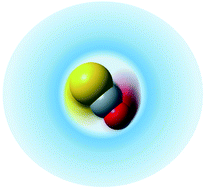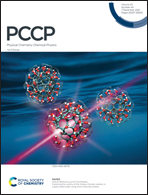Laser spectroscopy of helium solvated molecules: probing the inertial response
Abstract
Helium is the only solvent within which molecules can “freely” rotate, albeit with an increased moment of inertia relative to the gas phase. Evidence for this can be obtained by performing infrared laser spectroscopy on molecules embedded large helium clusters (nanodroplets), which often reveals rotationally resolved lines that are more closely spaced than in vacuo. The additional rotational inertia results from coupling of the helium to the molecule (rotor), and decreases in going from heavy (e.g., SF6) to light (e.g., CH4) rotors due to a partial breakdown in the adiabatic (following) approximation; faster (lighter) rotors cannot couple as well to helium since their effective interaction with helium is less anisotropic. In addition to this “mass” dependence to the coupling, there is also a time dependence to it, which shows up in the IR spectra as an asymmetry in the rovibrational lineshapes; this results from a delay in the response of helium to the change in rotational speed of the solvated molecule (when ΔJ = ±1). In this perspective we discuss the coupling between various probe molecules and helium that have been investigated by infrared laser spectroscopy in the frequency domain.

- This article is part of the themed collection: PCCP Perspectives


 Please wait while we load your content...
Please wait while we load your content...